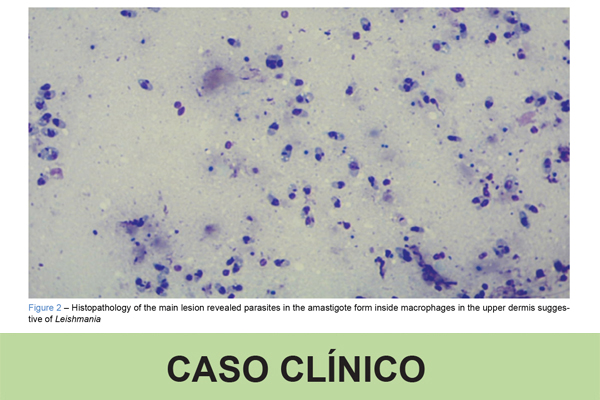SOCIAL MEDIA
Portuguese Medical Association's Scientific Journal

Species associated with visceral leishmaniasis, such as L. infantum, may be responsible for cutaneous leishmaniasis (CL), particularly in the Mediterranean region. In immunosuppressed hosts, classification as complicated CL is essential, as the risk of mucosal leishmaniasis warrants systemic therapy. We report the case of a forty-seven-year-old male living in Portugal, with Fabry disease and receiving immunosuppressive treatment with adalimumab and methotrexate for Crohn’s disease. There was no travel history outside of Europe. He presented a two-year-old, 5.5 cm plaque with a well-defined hyperkeratotic elevated border and central, painless ulceration on his back. The biopsy revealed parasites inside macrophages suggestive of Leishmania, and PCR identified the species as L. infantum. A biopsy via nasal endoscopy excluded mucosal involvement. Classification as complicated CL dictated treatment with liposomal amphotericin B and subsequent topical paramomycin. The rarity of CL in Portugal may delay its diagnosis, especially in autochthonous infections. Treatment choice is complicated by the heterogeneity of drugs available worldwide. As the global prevalence of CL increases, it is important to be aware of this diagnosis.